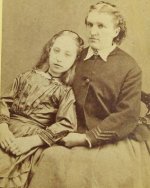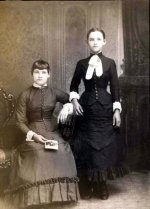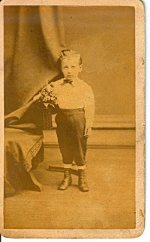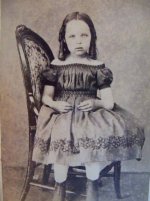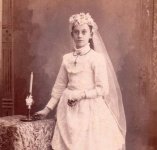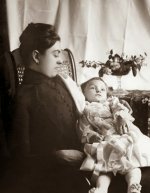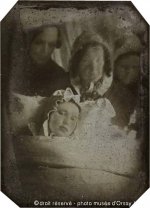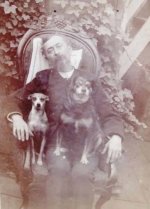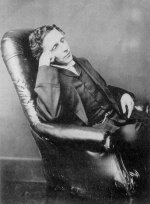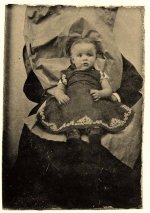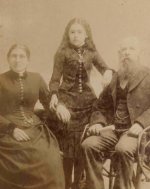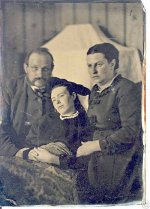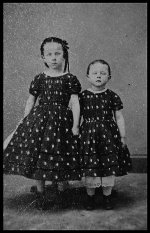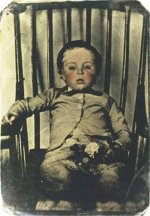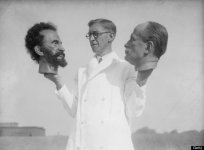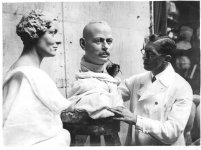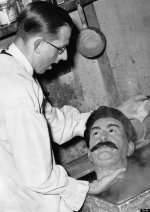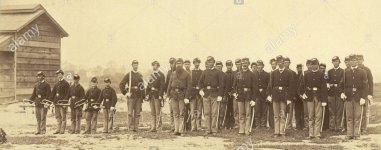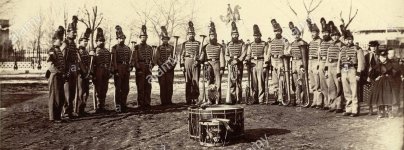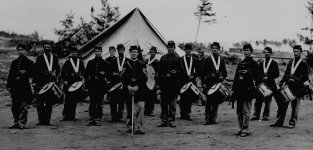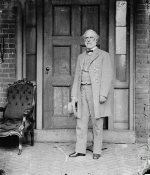The Victorian Era was a pretty morbid time in human history. One of the most unsettling traditions of the era was the practice of post-mortem photography.
Some weird things were happening around the US Civil War times (1861-1865). Is General Lee dead (or made out of wax) in the below photograph taken 5 years before his official death in 1870? Note the stand visible in between his feet.
Officially - On September 28, 1870, Lee suffered a stroke. He died two weeks later, shortly after 9 a.m. on October 12, 1870, in Lexington, Virginia, from the effects of pneumonia. According to one account, his last words on the day of his death, were "Tell Hill he must come up. Strike the tent", but this is debatable because of conflicting accounts and because Lee's stroke had resulted in aphasia, possibly rendering him unable to speak.

Exposure requirement - a few seconds after 1845.
(pictures in question are post Civil War)Exposure Info: The truth is that very early daguerreotypes (those from 1839-1845) did take 60-90 seconds of sitting still to capture an image, but the majority of daguerreotypes we see today are from post-1845, when new technology (the addition of bromine fumes to the process) reduced exposure times to a few seconds. - source
You can see in many of these photographs how these methods were used; some photographers managed through clothes and furniture to make them less evident, almost invisible. Some families preferred to have their deceased loved ones photographed as if they were asleep; others wanted a more “alive” feel. Photographers achieved this feeling by using glass eyes and other tricks. - A Brief History Of Post-Mortem Photography
Was the ear reconstructed after Lincoln was shot behind it?

Thank Mathew Brady
(responsible for the above chair photographs) Mathew B. Brady (May 18, 1822 – January 15, 1896) was one of the earliest photographers in American history, best known for his scenes of the Civil War.

1875 photo
Tell tale sign: During the war, Brady spent over $100,000 to create over 10,000 plates. He expected the US government to buy the photographs when the war ended. When the government refused to do so he was forced to sell his New York City studio and go into bankruptcy. Congress granted Brady $25,000 in 1875, but he remained deeply in debt.
Sources:
- If You Ever See A Photo Like This In A Book, There's Something You Should Know
- A Brief History Of Post-Mortem Photography
- Mathew B. Brady
- Daguerreotype Q&A
- Why people never smiled in old photographs
- A Proximate Violence: Madame Tussaud's Chamber of Horrors
KD hypothesis: We have seen too many unexplainable, from the traditional historical point of view, things. I understand that this topic is questioning one's sanity, but somehow, I feel fairly confident suggesting the following.
There was a project meant to falsify a specific period in the history of the world. May be to substitute one meaning of the events with a totally different one. In this case, it is the Civil War, and post Civil War period in the United States. In a short period of time there were multiple photographs taken. Whether those were real dead people, or Madame Tussauds type wax sculptures, I do not know. But I do ask you to pay closer attention to what you are seeing, and try to rationalize certain facts, and occurrences.
Her first wax figure was created in 1777 and was the figure of Voltaire. Some of the figures she made herself still exist. The London gallery originally contained some 400 different figures, but fire damage in 1925 coupled with German bombs in 1941 has rendered most of these older models defunct.
I consider a possibility where none of the people in the photographs in question are alive. Meaning they are either dead, or made out of wax.

The stability support stand: Even for pre-1845 time frame this support stand sounds lame. You can still twitch and twist with it. For the post-1845 technology, requiring only a few seconds to take a photo, I do not see any reasons to use this support stand. Who here can not stand still for 5-10 seconds? So why did they use it? I think this "immobilization technique" story is a cover up for a cover up.
KD Opinion: Is this how a part of our fake history was made? I, personally, lean towards these "historical individuals" being made out of wax, for the stand does not appear to be strong enough to support a human body weight. But then again, may be it could.
The photographer died broke. The original Madam Tussauds figures got destroyed. What else is new?
Wonder what that would mean for our history, if such a fakery was indeed carried out.
Note: Reddit's CulturalLayer provided an idea for this article.
Some weird things were happening around the US Civil War times (1861-1865). Is General Lee dead (or made out of wax) in the below photograph taken 5 years before his official death in 1870? Note the stand visible in between his feet.
Officially - On September 28, 1870, Lee suffered a stroke. He died two weeks later, shortly after 9 a.m. on October 12, 1870, in Lexington, Virginia, from the effects of pneumonia. According to one account, his last words on the day of his death, were "Tell Hill he must come up. Strike the tent", but this is debatable because of conflicting accounts and because Lee's stroke had resulted in aphasia, possibly rendering him unable to speak.
Exposure requirement - a few seconds after 1845.
(pictures in question are post Civil War)
You can see in many of these photographs how these methods were used; some photographers managed through clothes and furniture to make them less evident, almost invisible. Some families preferred to have their deceased loved ones photographed as if they were asleep; others wanted a more “alive” feel. Photographers achieved this feeling by using glass eyes and other tricks. - A Brief History Of Post-Mortem Photography
What if they are dead?
(or some of them are)
Third guy from the right even has a thumb support lanyard.
They have those support stands. Why?
L to R: 1st-Arthur Boreman; 3rd-Andrew Wilson; 4th D.D.T. Farnsworth; 5th- Henry Dering; 6th- Gibson Cranmer.

Larger File
Who looks alive in the below photo? I can see only one.
(back then people did not look at the camera?) - source
General Lee and his Confederate officers in their first meeting since Appomattox, August 1869.
This is the only from life photograph of Lee with his Generals in existence, during the war or after.

US Political Establishment - post 1865
(same New-York "chair" photographs) - do these guys look alive?
Can you imagine if none of the below guys including the first colored senators and representatives ever existed?















For the most of the above, this is the only photo in existence.
As a matter of fact, try to find a different photo of these HUGE political figures.
Abraham Lincoln
1809 – 1865
The only one with multiple photographs is Abraham Lincoln. But I was unable to find a clear photo where you can see his feet unobstructed. He is always either standing or sitting. Unsurprisingly, he sat in that chair as well. And then the Government refused to pay Mathew Brady?(or some of them are)
Third guy from the right even has a thumb support lanyard.
They have those support stands. Why?
L to R: 1st-Arthur Boreman; 3rd-Andrew Wilson; 4th D.D.T. Farnsworth; 5th- Henry Dering; 6th- Gibson Cranmer.
Larger File
Who looks alive in the below photo? I can see only one.
(back then people did not look at the camera?) - source
General Lee and his Confederate officers in their first meeting since Appomattox, August 1869.
This is the only from life photograph of Lee with his Generals in existence, during the war or after.
US Political Establishment - post 1865
(same New-York "chair" photographs) - do these guys look alive?
Can you imagine if none of the below guys including the first colored senators and representatives ever existed?
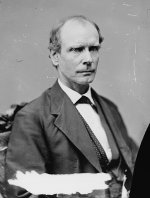
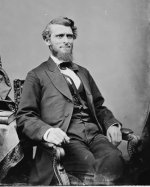
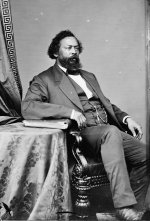
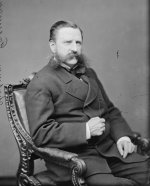
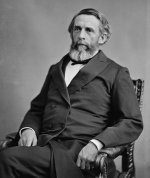
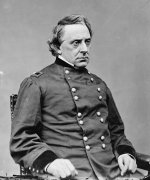
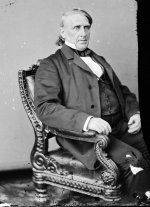
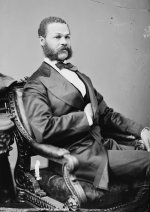
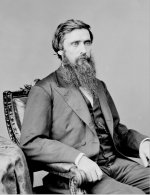
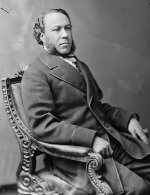
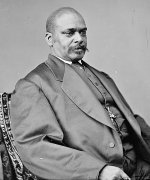
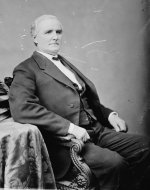
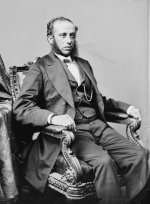
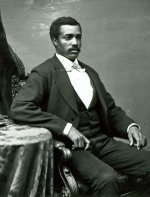
For the most of the above, this is the only photo in existence.
As a matter of fact, try to find a different photo of these HUGE political figures.
Abraham Lincoln
1809 – 1865
Was the ear reconstructed after Lincoln was shot behind it?
Thank Mathew Brady
(responsible for the above chair photographs)
1875 photo
Tell tale sign: During the war, Brady spent over $100,000 to create over 10,000 plates. He expected the US government to buy the photographs when the war ended. When the government refused to do so he was forced to sell his New York City studio and go into bankruptcy. Congress granted Brady $25,000 in 1875, but he remained deeply in debt.
Sources:
- If You Ever See A Photo Like This In A Book, There's Something You Should Know
- A Brief History Of Post-Mortem Photography
- Mathew B. Brady
- Daguerreotype Q&A
- Why people never smiled in old photographs
- A Proximate Violence: Madame Tussaud's Chamber of Horrors
KD hypothesis: We have seen too many unexplainable, from the traditional historical point of view, things. I understand that this topic is questioning one's sanity, but somehow, I feel fairly confident suggesting the following.
There was a project meant to falsify a specific period in the history of the world. May be to substitute one meaning of the events with a totally different one. In this case, it is the Civil War, and post Civil War period in the United States. In a short period of time there were multiple photographs taken. Whether those were real dead people, or Madame Tussauds type wax sculptures, I do not know. But I do ask you to pay closer attention to what you are seeing, and try to rationalize certain facts, and occurrences.
Madame Tussauds
By 1835, Marie had settled down in Baker Street, London and opened a museum. One of the main attractions of her museum was the Chamber of Horrors. The name is often credited to a contributor to Punch in 1845, but Marie appears to have originated it herself, using it in advertising as early as 1843. This part of the exhibition included victims of the French Revolution and newly created figures of murderers and other criminals. Other famous people were added, including Lord Nelson and Sir Walter Scott.Her first wax figure was created in 1777 and was the figure of Voltaire. Some of the figures she made herself still exist. The London gallery originally contained some 400 different figures, but fire damage in 1925 coupled with German bombs in 1941 has rendered most of these older models defunct.
I consider a possibility where none of the people in the photographs in question are alive. Meaning they are either dead, or made out of wax.
The stability support stand: Even for pre-1845 time frame this support stand sounds lame. You can still twitch and twist with it. For the post-1845 technology, requiring only a few seconds to take a photo, I do not see any reasons to use this support stand. Who here can not stand still for 5-10 seconds? So why did they use it? I think this "immobilization technique" story is a cover up for a cover up.
KD Opinion: Is this how a part of our fake history was made? I, personally, lean towards these "historical individuals" being made out of wax, for the stand does not appear to be strong enough to support a human body weight. But then again, may be it could.
The photographer died broke. The original Madam Tussauds figures got destroyed. What else is new?
Wonder what that would mean for our history, if such a fakery was indeed carried out.
What if these people have never existed?
That said, try to find a photograph of General Lee, where he is not supported by either his saber, a chair, or a support stand.Note: Reddit's CulturalLayer provided an idea for this article.


